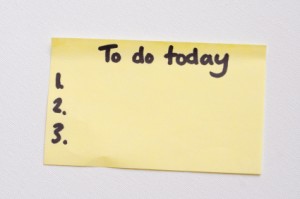Spinning plates. Putting out fires. Treading water. Does this sum up a good portion of your day?
Lawyers are paid to solve problems. Other people’s, not our own. If you’re spending too much time solving your own problems, you won’t have time for things that advance you towards your most valuable goals. Like getting paid by more people to solve more of their problems.
Solving (your) problems is important. When someone quits, you have to find someone to replace them. When you are audited, sued, or charged with an ethical violation, you have to respond. But responding to problems like these only helps you keep the machine running. It doesn’t bring in new clients or additional revenue. Peter Drucker said, “Results are gained by exploiting opportunities, not by solving problems.â€
One good thing about problems is that they tend to repeat. It may be a few years before you have to deal with something again, but knowing that it will happen again allows you to prepare for it:
1. Make a list of problems that occur periodically. Small ones and big ones. Hiring and training new employees and temps, equipment leasing and purchasing, hiring vendors, moving offices, record retention, website security, and the list goes on. Add to your list throughout the year.
2. Create a system for handling each problem. Document your efforts to resolve the problem and minimize its consequences. Create checklists, forms/letters, and instructions.
3. Go through the list of problems and see which ones can be handled, at least in part, by someone else. Delegate responsibility for handling those problems (at least partially). Instead of running ads when you need to hire a new employee, for example, you might hire an employment agency.
It’s worth investing extra time in this project because it will save you time and headaches in the future. You’ll have more time for getting things done that help you grow your practice, instead of merely keeping the doors open.








